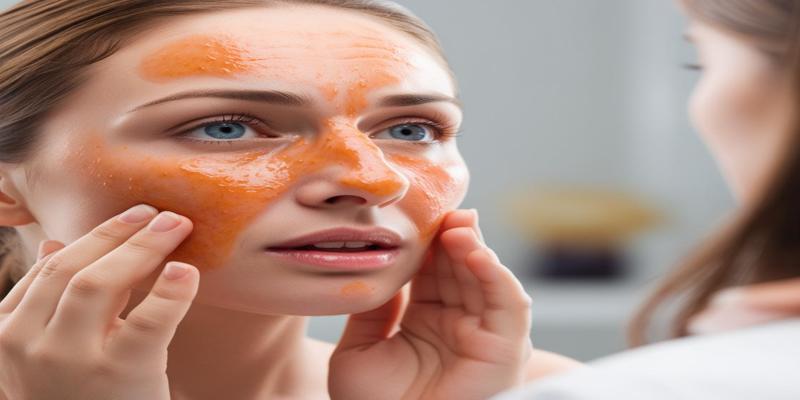Advertisement
Applying products to your face while its still damp might seem odd, but its actually a common trick for better skin results. Some people say this simple change helps products work more deeply. When skin is damp, it can absorb more easily, meaning your products might go further. In this article, well look at why this works, the good and bad sides of applying skincare on damp skin, and give tips for making it work best. Youll see how something as easy as timing your skincare can make a real difference in the results you see. Lets begin.
When you apply skincare on damp skin, the effects can be quite different than when your skin is fully dry. This is because damp skin can absorb skincare products better and faster. Just as a sponge picks up more water when its already wet, damp skin can take in skincare ingredients more easily. When your face is slightly moist, its natural moisture helps products spread and sink in without effort of your own.
Heres how it works: on damp skin, the space between skin cells slightly opens, making it easier for products to go deep into the skins layers. This extra moisture on your skin acts as a kind of bridge that helps active ingredients (like those in serums or lotions) go right to work, giving you faster and sometimes better results. Applying products on damp skin can even help you use less product while covering more surface area, saving you some money in the long run. But hey, thats not why were doing this practice. Its for the immense benefits. More on that below.
When skin is damp, products like serums and moisturizers do more to keep skin hydrated. Damp skin lets these products sink in better, which locks in water and makes skin feel softer and fuller. Moisturizers work by holding water in the skin, so applying them on damp skin helps trap that extra moisture. This is especially helpful if you have dry skin, as it can stay hydrated longer. Using products this way makes them more effective, without needing to use too much at once. Its a simple trick that helps your skin stay soft and smooth.
Damp skin can boost the power of active ingredients like vitamin C, retinol, and hyaluronic acid. With damp skin, these ingredients have an easier time going deeper, which means they can work faster and sometimes even more effectively. The water on your skin acts like a pathway, helping these key ingredients get right where theyre needed most. This can be especially good if youre aiming for brighter, clearer, or more even skin, as it lets these active ingredients reach those layers more efficiently. Its a small step that can make a big difference in the results you see.
While applying skincare on damp skin has its benefits, it may not be ideal for everyone. Some products arent designed to be used on wet skin. So, they may not perform as well or even cause unwanted effects in rare cases. The possible downsides of this skincare technique below can help you decide if its right for your routine.

For sensitive skin types, applying products on damp skin can sometimes lead to irritation. Damp skin may allow active ingredients to penetrate too deeply, which, for sensitive skin, could result in stinging, redness, or even breakouts. Some ingredients, especially stronger actives like retinoids or exfoliating acids, may feel harsher on damp skin. If you have sensitive skin, you shouldnt apply all your products in this way. Test this method with milder products first to see how your skin responds. Starting gradually can also reduce the chance of irritation.
Some skincare products arent meant for damp application and can feel heavy or sticky if applied to wet skin. Products with rich or oily textures, like certain creams or sunscreens, are not ideal for spreading evenly on damp skin.
Applying skincare to damp skin can be beneficial, but its essential to do it right to avoid any issues. Knowing which products work well with wet skin and the best prep methods can help you get the most out of this method. Here are a few tips to help you make the most of your routine.
Certain products work better on damp skin because they help them absorb faster and more deeply. Hydrating serums, hyaluronic acid, and lightweight moisturizers are ideal since they bind water to the skin, locking in moisture. Water-based serums and toners can also be highly effective because damp skin allows them to penetrate faster and better. Just a few drops can go a long way, and you may even use less product. Oils may also work on damp skin to seal in hydration, but theyre best for those with drier skin. Avoid products with high levels of acids or actives, as they may be too intense for damp skin.
To start, cleanse your face thoroughly and rinse with lukewarm water to avoid shocking your skin. Dont towel-dry fullyleave your skin a bit damp to create the perfect surface. If youre using a toner or mist, apply it right after cleansing while your skin is still moist. Pat it gently, and then apply your serum or moisturizer right away. Quick and gentle application helps seal moisture into the skin. Remember not to rub too hard; apply products smoothly with gentle hands.

Applying skincare on damp skin isnt always the best choice for everyone. Sometimes, using products on dry skin can give better results, especially if your skin is sensitive or youre using potent treatments. For those with sensitive skin, dry skin application can lower the chance of irritation, as damp skin tends to absorb ingredients more quickly and intensely. This method can also work better if youre applying thick creams or oils that dont need water to help them absorb.
To wrap up, applying skincare to damp skin can boost how products work, help your skin hold onto moisture better, and absorb the active ingredients more efficiently. However, its not always the best choice for everyone. Some may find it can cause irritation, especially those with sensitive skin or who use strong actives like acids or retinoids. And certain products, like thick creams or oils, might work just as well (or even better) on dry skin. Experiment a bit, but always go slowly if youre trying new methods or products. Consider your skin type and what goals you want to reach.
Advertisement

By Isabella Moss/Mar 18, 2025

By Sid Leonard/Mar 17, 2025

By Martina Wlison/Nov 14, 2024

By Susan Kelly/Dec 28, 2024

By Georgia Vincent/Dec 28, 2024

By Korin Kashtan/Nov 13, 2024

By Maurice Oliver/Mar 18, 2025

By Noa Ensign/Jan 13, 2025

By Tessa Rodriguez/Mar 01, 2025

By Triston Martin/Dec 28, 2024

By Isabella Moss/Nov 14, 2024

By Nancy Miller/Mar 18, 2025